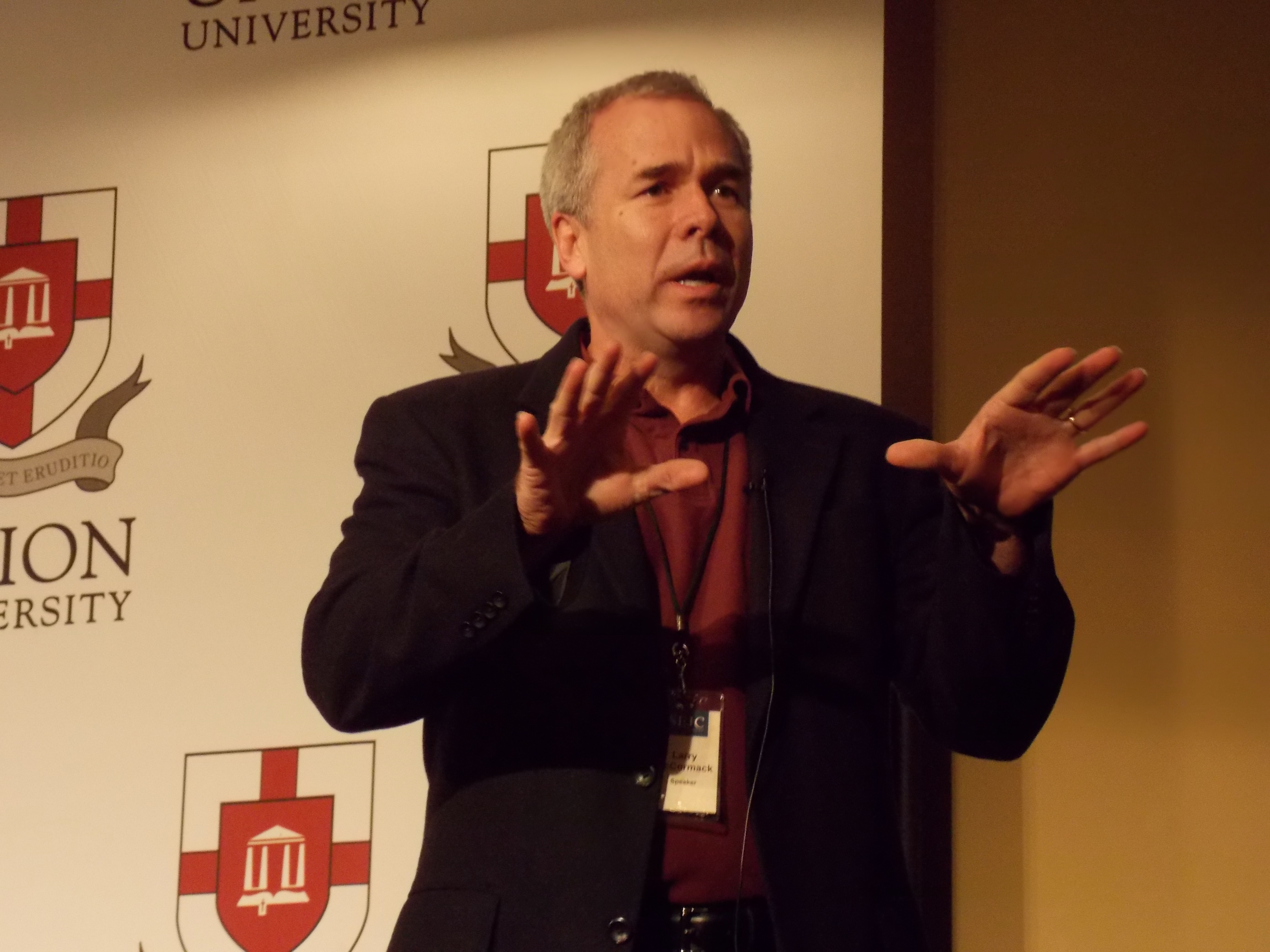Almost 300 future photographers, editors, reporters and layout designers crowded into the Carl Grant Events Center at Union University to listen to keynote speaker Larry McCormack’s blunt advice on staying ahead and going the extra mile in a field that is constantly changing: journalism.
“Think differently, (and) challenge yourself,” said McCormack. “If you have the safe shot, then you have the safe shot. Now, move on. Don’t stay there. You know who has the safe shot; 90 percent of the people, and if you want to be there, you’ll be with 90 percent of the people. If you want to be in the top 10 percent of people, you have to do the things that the top 10 percent do.”
McCormack, a 30-year photographer and 14-year veteran of The Tennessean in Nashville, witnessed dramatic changes in journalism, especially the change in photojournalism from black and white to color, as well as the evolution to digital media. He has also adapted to social media, audio podcasting, video and other multimedia platforms, which he now does on a regular basis.
“In media today, you are going to do all this,” said McCormack. “You’re going to copywrite; you’re going to do video; you’re going to edit; you’re going to do audio. If you’re not doing that, you’re not going to last long. If you are a good photographer, a good reporter, a good copy editor, you are going to be sought after.
“Out of this class here, probably about 10 percent of you guys are going to find jobs in the field that you want to be in,” added McCormack. “The top 10 percent are going to come out winners. The other 90 percent, I’m sorry.”
Although McCormack’s outlook may seem bleak, he did offer advice that could potentially help set the SEJC listeners apart from other fledgling journalists who are entering the field.
“When I was young, I saw a presentation by Brian Lanker, and it changed my life,” said McCormack. “I liked his style, so I tried to copy him. Guess what happened. I’m not as good him, but I developed my own style–a style that I hope brands me as who I am, and allows me a different look at photographs. What you need to do is develop your own style and brand yourself.”
To develop a style, McCormack suggested thinking differently and changing perspectives, along with diligent practice, research and study.
“You want to be on the intellectual (level) of whoever this person is,” said McCormack. “Not to the point that they are, but you need to know enough, so you can hold an intelligent conversation. There is a reason most of you guys are getting a liberal arts degree. It’s so you can communicate. It’s so that you can talk to people, and you can communicate that (what you discovered) back to your community.”
McCormack also reiterated that taking the safe option isn’t going help, especially when trying to create a distinguished piece, and he challenged the audience to go out into the field and take risks.
“If you stay where you are safe, you are not doing your job,” said McCormack. “Don’t take the obvious. Don’t take the ordinary. Whatever obstacle you have that shows up in front of you is not an obstacle; it is an opportunity.”

